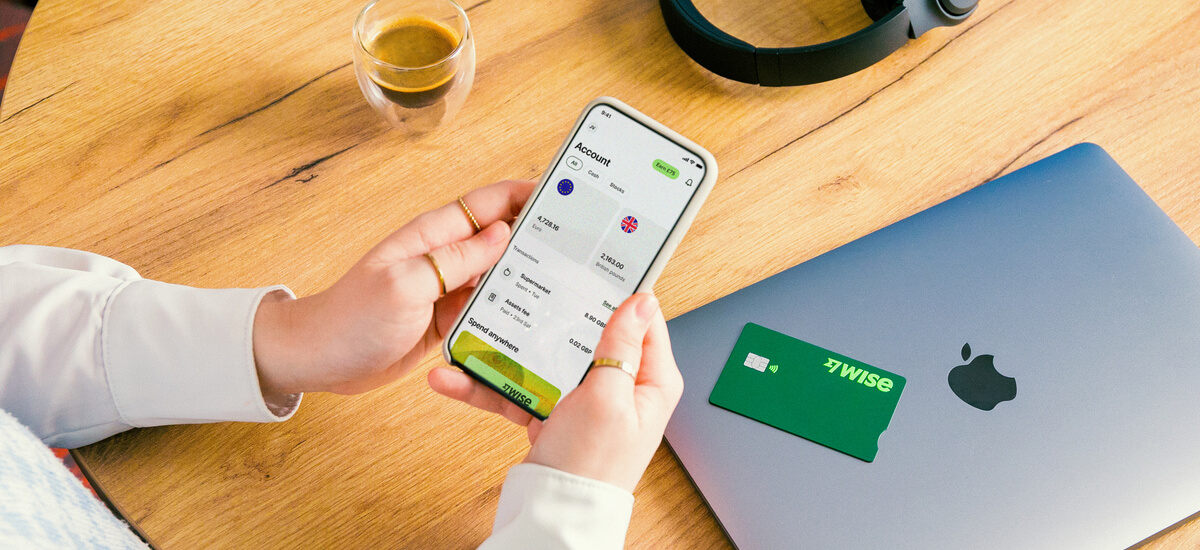Importing from Spain to the UK: Complete Business Guide
Read our complete business guide on importing from Spain to the UK, covering everything from customs to shipping methods.

If you own a UK business or will be trading here in the UK, you’ll need to know about invoicing practices and rules.
In this guide, we’ll be looking at e-invoicing in the UK. Electronic invoicing is becoming more common in many countries, and there are even rules about when you need to use it.
So read on for everything you need to know about UK e-invoicing, including legislation and how to send your first digital invoice.
And if you need a cost-effective and fast way to get paid by clients in any country, take a look at the Wise Business account.
With this powerful online account, you can receive international payments in multiple currencies, without the complexities or costs of using a bank. It’s the ideal solution for businesses trading across borders.
💡 Learn more about Wise Business
In the UK, e-invoicing isn’t mandatory for B2B (business-to-business) transactions. This means you can invoice your clients and customers in whatever format you choose, based on an agreement between you.
However, there is e-invoicing UK legislation relating to public bodies. HMRC rules stipulate that electronic invoicing systems must be used for any payments to and from public entities (such as the NHS, government departments or local councils).¹
There are additional rules that must be followed, especially if you choose to adopt e-invoicing as a private business involved in B2B sales activities. These include the following:¹
- You can only use one system, so cannot issue both paper and electronic invoices for the same supplies or for the same customers
- The customer must agree to receive e-invoices
- The invoice can be either a structured format such as XML, or an unstructured format such as a PDF. For either, the invoice must be clearly legible
- Steps must be taken to ensure the authenticity of the e-invoice, including certified electronic signatures or use of electronic data interchange (EDI) systems
If you can’t meet HMRC requirements, you may be liable to pay a penalty.²

Before you can send an electronic invoice, you’ll firstly need to know what information to include. Here’s what should be included on every e-invoice, according to HMRC’s rules for tax invoices:²
- An identifying document number
- The date the goods or service was supplied
- The date the invoice document was issued
- Your name, address and VAT registration number (if registered for VAT)
- The name and address of the customer
- A description of the goods or services supplied
- The unit price
- The quantity of the goods or extent of services
- The rate of VAT (if applicable)
- The amount payable, excluding VAT - this can be given in any currency
- The rate of any discount offered
- The total amount of VAT chargeable in GBP (if applicable)
To send an e-invoice, you’ll need to first choose a format and a system which meets HMRC requirements.
The most important of these requirements is ensuring the integrity and authenticity of the document. This can be achieved with the use of certified electronic signature software.
Both you and your client could also agree to use EDI (electronic data interchange) software. This involves a computer-to-computer exchange of structured data, so that invoices can be automatically processed by the recipient.
Still have a question about electronic invoice systems in the UK? We’ll tackle some of the most commonly asked questions below.
E-invoicing is only mandatory in the UK if you’re working with a public organisation. It’s not a legal requirement for B2B businesses. You can choose to use e-invoicing as a private business selling to other private businesses, but you’ll need to make sure you meet HMRC’s requirements.
One of the most important HMRC requirements for e-invoicing in the UK is ensuring the authenticity of the document. This means taking steps to prevent information on the invoice being altered, and being able to guarantee where the document came from.
HMRC recommends the use of advanced digital signature technology, or the use of electronic data interchange (EDI) systems for automatic processing of invoices. You must also ensure that e-invoices are legible, and contain all the same information as a paper invoice.
An electronic invoice can be sent simply by email, through accounting software or electronic data interchange (EDI) systems. HMRC has guidance on e-invoicing available here.
An e-invoice can be a PDF or an XML spreadsheet. If a PDF, if it will look similar to a paper invoice. If it’s in XML form, it’s usually designed for automatic processing so will look quite different to standard paper invoices.
Your best bet as a newcomer to e-invoicing is to use accounting or other software. Alternatively, you can contact HMRC or an accountant for guidance.
An e-invoice is a digital version of an invoice document, which is submitted and processed electronically. A normal invoice is usually in paper form, and requires manual processing and filing.
Wise Business can help your company get paid by customers in multiple currencies, with low fees and the mid-market exchange rate.

Your Wise Business account comes with local account details to get paid in major foreign currencies like Euros and US Dollars just as easily as you do in Pounds.
All you need to do is pass these account details to your customer, or add them to invoices, and your customer can make a local payment in their preferred currency. You can also use the Wise request payment feature to make it even easier and quicker for customers to pay you.
Get started with Wise Business 🚀
After reading this guide, you should hopefully have a better understanding of electronic invoicing rules and requirements in the UK.
If your business only deals in B2B, it’s not mandatory to get on board with e-invoicing - although there are many benefits, including improved speed, efficiency, accountability and reducing the risk of human error.
But if you deal or sell to public entities, it’s crucial that you get to grips with e-invoicing as soon as possible - or you could incur penalties or other action from HMRC.
Sources used for this article:
Sources checked on 30-04-2024.
*Please see terms of use and product availability for your region or visit Wise fees and pricing for the most up to date pricing and fee information.
This publication is provided for general information purposes and does not constitute legal, tax or other professional advice from Wise Payments Limited or its subsidiaries and its affiliates, and it is not intended as a substitute for obtaining advice from a financial advisor or any other professional.
We make no representations, warranties or guarantees, whether expressed or implied, that the content in the publication is accurate, complete or up to date.

Read our complete business guide on importing from Spain to the UK, covering everything from customs to shipping methods.

Read our complete business guide on importing from Türkiye to the UK, covering everything from customs to shipping methods.

Is Tide Bank safe? Find out everything you need to know about Tide Bank business account security here.

Is Revolut Business safe? Find out everything you need to know about Revolut UK security here in our helpful guide.

Read our helpful guide on how to start a business in Romania from the UK, including info on company formation, legal entity types and required documents.

Read our helpful guide on how to start a business in Lithuania from the UK, including info on Lithuania company formation, legal entity types and more.